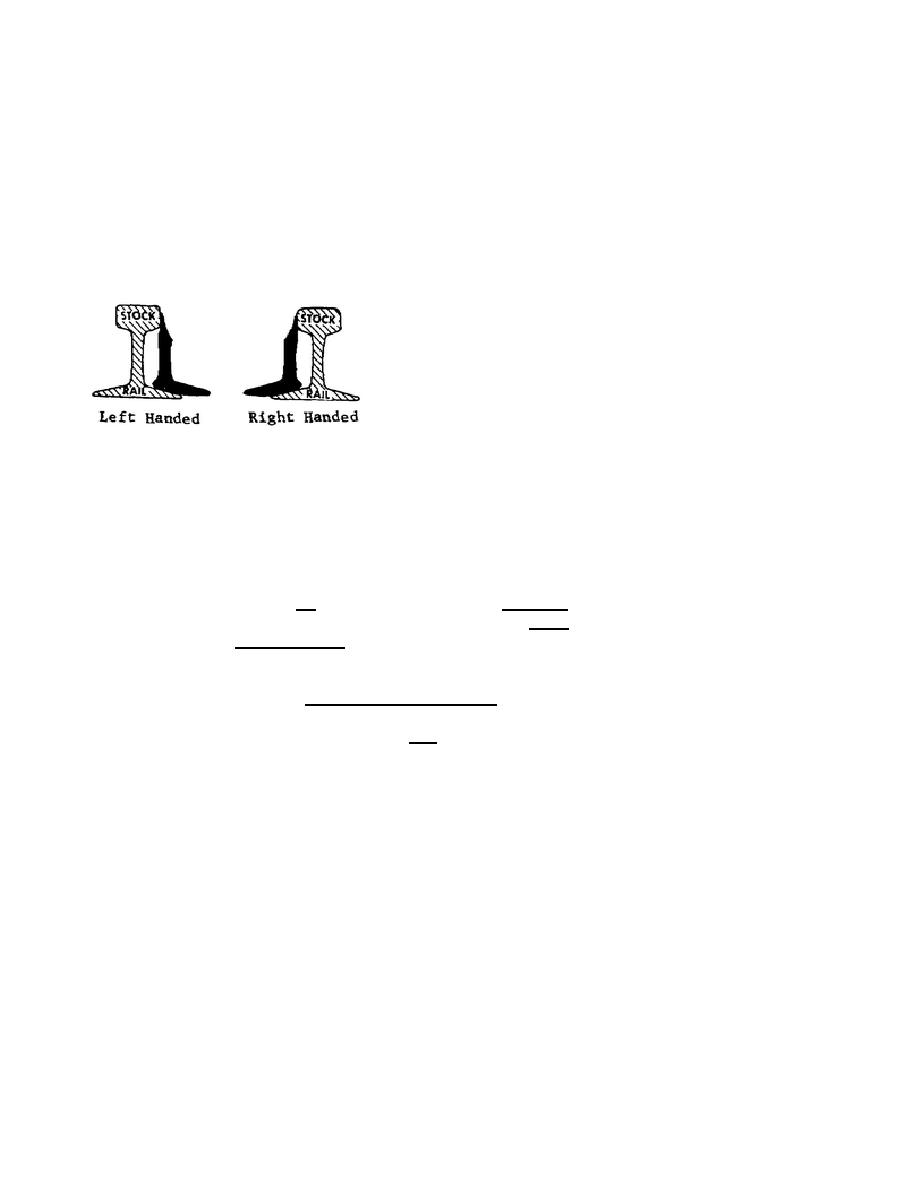
satisfactory. Unlike the stub type, the split switch is fastened to crossties, usually referred to as switch ties or
timbers. Their lengths vary according to their location in relation to the various parts of the switch. Look now at
figure 2.3 which illustrates the layout of a split switch turnout. Note that the ties graduate in length from 8 1/2
feet just beyond the switch points to 15 1/2 feet beyond the heel of the frog.
The split switch, like the stub one, has two movable rails; however, in the split switch one main-line and
one turnout rail move. In figures 2.4 and 2.5, the movable rails are marked with X's; the arrow in each figure
points out part of the switch-stand mechanism. Figure 2.4 is a view of a split switch closed for main-line
movement; figure 2.5 shows it thrown for turnout movement.
The movable rails are tapered to one-fourth inch wide at the top. The sketches inserted at the left are the
end views of left- and right-handed movable rails--the shaded areas
--as they appear beside their accompanying stock rails and as
viewed from the switch points.
2.5.
FROGS
A frog is used in a turnout where the two running rails intersect, to provide a flangeway, or channel, for
the wheel flanges to move from one rail to the other. It also provides, as nearly as possible, a continuous bearing
for the wheels.
Each part of a frog has a name. Study figure 2.6 as you read the next few sentences so that you may
identify the parts. Note that the toe is the opening between the wing rails on the end of the frog nearer the switch
points. The lead rails are attached to the wing rails at the toe. The throat is the narrowest part, usually 1 3/4 or 1
7/8 inches wide. The theoretical point is located where the gage lines of the stock and the switch rails would
intersect if they were extended past the actual point. If the point were planed to the theoretical point, the impact
of the car wheels would soon batter and break it. For that reason, the point is rounded off to approximately one-
half inch across and is called the one-half inch or actual point. The distance between the two points is equal, in
inches, to one half the frog number. For example, on a No. 8 frog, the points would be 4 inches apart. The end of
the frog away from the switch points is called the heel. That
33



 Previous Page
Previous Page
